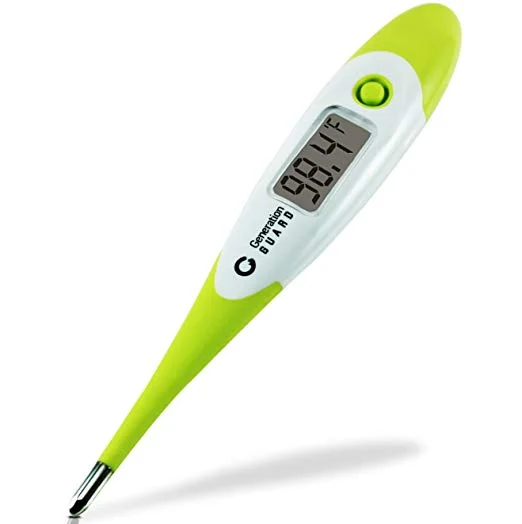Do Dogs Get Fevers?
The short answer is Yes, dogs do get fevers. Their body temperature can rise higher than normal. However, you can’t usually put your hand on your dog’s head and feel it to see if he has a fever, the way you might with a person. You can’t even tell if your dog has a fever by whether his nose is cold or hot.
Taking Your Dog’s Temperature

A dog who has a temperature over 103 is considered to have a fever since a fever refers to having an elevated body temperature. Fevers are usually caused by an infection or an inflammation.
A dog can also have a high temperature due to external causes such as over-exercising in high humidity. This can lead to heat stroke or hyperthermia. A dog that has a temperature that is over 106 is in serious condition and may die.
Symptoms of Fever in Dogs
Symptoms of fever in a dog can include the following:
- Shivering
- Depression
- Lethargy
- Loss of appetite
- Nasal discharge
- Vomiting
- Coughing
The only way you can really know if your dog has a fever is by taking his temperature.
Causes of Fevers
Dogs can have fevers for several reasons.
Toxins or poisons. A dog that eats some foods that are toxic, such as macadamia nuts, or some antidepressants, for example, can develop a fever.
Vaccinations. It is not unusual for some dogs to develop a fever as a short-term reaction to a vaccination. The dog’s immune system is having a reaction to the vaccine. These fevers are usually low grade and last 24 to 48 hours. You should call your vet and let him or her know that your dog is having a reaction so your vet can monitor the situation.
Infections. Dogs can have fevers due to infections. This is the most common cause of fever in dogs. The infection may be due to a virus, bacteria, or a fungus. The infection could be anywhere in the dog’s body and the symptoms will vary depending on the cause of the infection.
Dogs can also have a fever of unknown origin. In these cases the cause may never be known but it could be an infection that isn’t diagnosed, an immune system problem, something related to the bone marrow, or cancer.
Reducing Fever
If your dog has an elevated temperature, try giving him small amounts of water to keep him hydrated. Do not give him aspirin or acetaminophen to try to reduce the fever. Many human medicines, especially over-the-counter drugs, can make your dog sick or lead to death.
Instead, an acceptable treatment for your dog is medicine specifically designed to reduce fever in dogs. Chewy.com offers Nutri-Vet aspirin for Medium and Large Dogs that has produced a lot of happy customers. The comments on the product are generally good. Make sure if you purchase this product to avoid giving it to puppies under 6 months old and any small breed dogs under 6 lbs. If you’re looking for a product for smaller breeds you’ll want to pick up this one instead. Be sure to administer within 30 minutes after eating for best effect.
If your dog has a temperature over 103 F you should contact your veterinarian. A temperature over 106 F is an emergency. If his temperature is over 105 F, you can lower it by applying cool (not cold) water to his body, especially his ears and paws. You can use a fan on his damp fur to help cool him. Check his temperature with a rectal thermometer every few minutes. Once his temperature is 103, stop trying to cool him.











